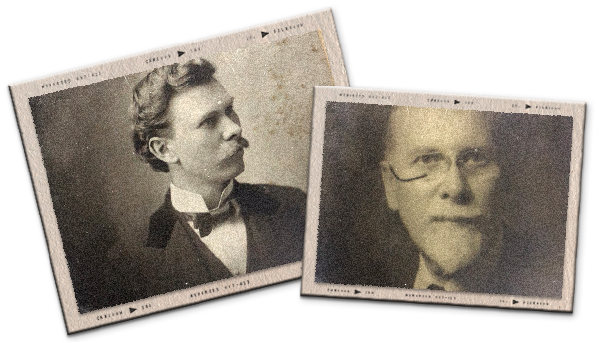
Spencer Heath's
Series
Spencer Heath Archive
Item 3049..
Paragraphs 3-7 of Item 001, titled and heavily edited in pencil by Alvin Lowi
April 20, 1998
Original is missing.
The Inorganic Realm and
Physical Science
Spencer Heath and Alvin Lowi
It is obviously the case with inorganic bodies that it is their sole
over-all function to exist; they come into and go out of being, they integrate and disintegrate, and their term ranges downward from that of the most stable, simple and ancient atom to the most transient, radioactive and complex — even to the almost negligible period of the most evanescent particle or wave. Their term ranges from the indefinitely long to the almost infinitesimally brief. Herein lies the field of physical science.
On its investigational or analytic side, science is the rational examination and study of organization as it exhibits itself palpably in the systems of planets and stars and obscurely (to human perception) in the relations of electrons, electro-nuclear atomic systems, and of myriad molecules in galactic array. It is the prime province of physics to ascertain in general terms those common relationships and uniformities of process and action within themselves by which these organizations — atomic to cosmic — maintain their specific unities for such periods of continuity or duration as they respectively achieve.
In all these phenomena modern science finds a basic fundamental of Reality, a perceptible event. Happening, occurrence, actuality, proceeding, and experience (where human action is consciously involved) are the particular terms. Technically, the magnitude of such events is denoted in terms of units of action. Action has been found composite in the cosmos precisely as it is also in the human consciousness. Just as the infant human seems to sense first bodies, then movements, then changes (discontinuities), both in and of itself and in things about it, so science reveals that every event is tricomposite of three distinguishable and separately measurable elements or aspects, namely, (1) mass — molar, molecular, etc. — which always has (2) motion — displacement in space — which two together constitute energy, and (3) time, period or discontinuity, which three abstractions taken together constitute action, which characterizes a concrete perceptible occurrence, the objective side of the interaction with environment that we call experience.
Now these three aspects, though capable of being separately attended to by analysis, are wholly abstract. Separately or in any union of less than the three they do not unite as action to denote an actuality or event. Taken subjectively, the first and second, mass and motion, constitute the abstraction called energy, and the second and third, motion and time, taken as a ratio, constitute the abstraction called velocity, neither of which is directly observable with the senses. The objective actuality or event, capable of being experienced, is always an integration of the three.
Physical science has provided three standard units of measurement in which to take the respective numerical magnitudes or dimensions of any sufficiently simple action or event. These are the three fundamental units of physical science known as the unit of mass (or force), the unit of motion (length, distance, space), and the unit of time (period or frequency of succession or discontinuity). In the metric or international system, these are called the gram, the centimeter and the second. Other units also are employed, such as units of energy, of velocity, and chemical, electrical units, but these are all derivative of the fundamental units or dimensions, mass, motion and time.
Physical science describes organized entities, with respect to their function of self-continuity, always in terms of the fundamental magnitudes or dimensions that constitute events. Such description is analysis and, being in terms of dimensions as ratios, is rational and quantitative. Such rational description constitutes understanding of the natural order of things, for the conception is in the same pattern and holds the same ratios as the experience. This is the rationale of research and investigation, and technology of rational knowing. It is motivated by a positive aesthetic inspiration as against negative or at best passive emotional reactions. It is quantitative in method, but its results are qualitative and creative and, thereby, spiritual in its psychological effects and satisfactions as foretaste of a universal rationality, self-consistency and beauty. But more than all this subjective effect, it lays the ground for a creative technology that works upon the objective environing world.
The quantitative analysis of observed action in events in terms of the ratios found in their fundamental composition makes it obvious how desirable events can be reproduced by bringing together further quantities of mass, motion and time in like proportions and even to determine and thus create new events by synthesis of mass, motion and time in new or modified proportions to desired ends. This transformation of action by re-synthesis of its elements in new proportions is the basic quantitative method common to all rational technologies and engineering processes, from a simple lever changing the ratios between the mass (force) and the motion (distance) at the point of application and at the point of effect, to the changes of frequency, voltage, etc., in the transformation of kilowatt-hours from a spark to an incandescent lamp. All these processes, while quantitative in method, are nonetheless and preeminently qualitative in their effects, for they objectify, in their several ways and degrees, the human aspiration, dream and desire — the creative and thereby spiritual dominion of man over all created (organized) things.
_______________
Metadata
| Title | Article - 3049 |
| Collection Name | Spencer Heath Archive |
| Series | Article |
| Box number | 19:3031-3184 |
| Document number | 3049 |
| Date / Year | 1998-04-20 |
| Authors / Creators / Correspondents | Alvin Lowi, Jr. |
| Description | Paragraphs 3-7 of Item 001, titled and heavily edited in pencil by Alvin Lowi |
| Keywords | Physics Inorganic Realm Lowi |

